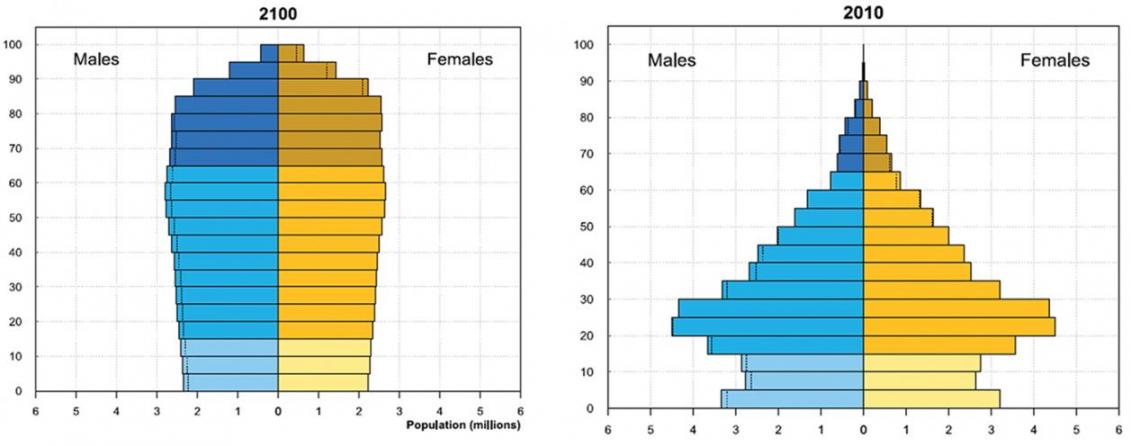According to the 2012 World Population Prospect report released by the United Nations Population Division, the population of Iran will be 100 million in 2050 with the estimated average annual growth rate of -0.25% between 2050 and 2100, reaching at 94 million in 2100.
Currently, the serious demographic squeeze is neither Iran’s rising population from now to 2050 nor its shrinking population between 2050 and 2100, but it is its graying population.
According to WPP report, a shift from age group of 15-30 to that of +60 will happen in the Iranian population pyramid, transforming this pyramid from a triangle shape to a rectangular one. With respect to cultural, social, political, security and health aspects of the looming phenomenon, the considerable effects of an ageing population on Iran’s economy is analyzed here.
First, when the baby boomers of 1980’s retire, state pension commitments and the cost of health care benefits will become so heavy to be handled by the Social Security Organization of Iran. What makes it worse is that the absolute number of tax-payers will decline and retirees tend to pay lower income taxes because of not working. Hence, balancing the output and input of the pension system will be a real challenge for the government. To deal with this dilemma in the second half of the 21st century, the government may either ask workers and firms to pay higher taxes, create disincentives to work and to invest, or raise the retirement age, or trim its pension promises.
Second, old people have higher accumulated savings per head than young people, but spend less on consumer goods. Depending on how the government runs the economy in the future, it may end up with economic benefits or drawbacks.
Third, human resources especially the youth are the driver of the economic prospect of a country. An ageing population could lead to a shortage of workforce which pushes up wages provoking wage inflation and causes a lack of creativeness and innovation within the economy. One solution to this demographic problem is immigration. However, absorbing immigrants can be cumbersome because immigration is almost a zero-sum game that cannot work for everyone forever. Ironically, Iran is one of the top immigrant-sending countries right now.
Fourth, an increase in the number of retired people will create a bigger market for goods and services linked to the elderly and will shrink or eradicate some businesses providing goods and services to the youth. The former buys fewer capital assets such as land and house, but needs more services, whether in health care or tourism. The best paragon for the latter is education because the demand for education will decrease as the number of young people drops and as fewer young people would probably continue into tertiary education since they would be in demand as part of the Iranian workforce.
To address the concern of our aging population, the government is going to persuade families to have more children. On the one hand, boosting the fertility rate to replacement rate of 2.1 births per woman is the most rational way of solving this concern. In addition, Iran’s statesmen should consider that the widespread fall in the country’s fertility rate, around 1.67 as stated by the World Bank, is mostly driven by the harsh economic conditions such as hyperinflation and high unemployment rate especially during the last couple of years. Thus, the key to solving the ageing population dilemma in Iran is a prosperous economy.
Amir Moradi is a PhD candidate in finance at France Business School and a financial consultant.


